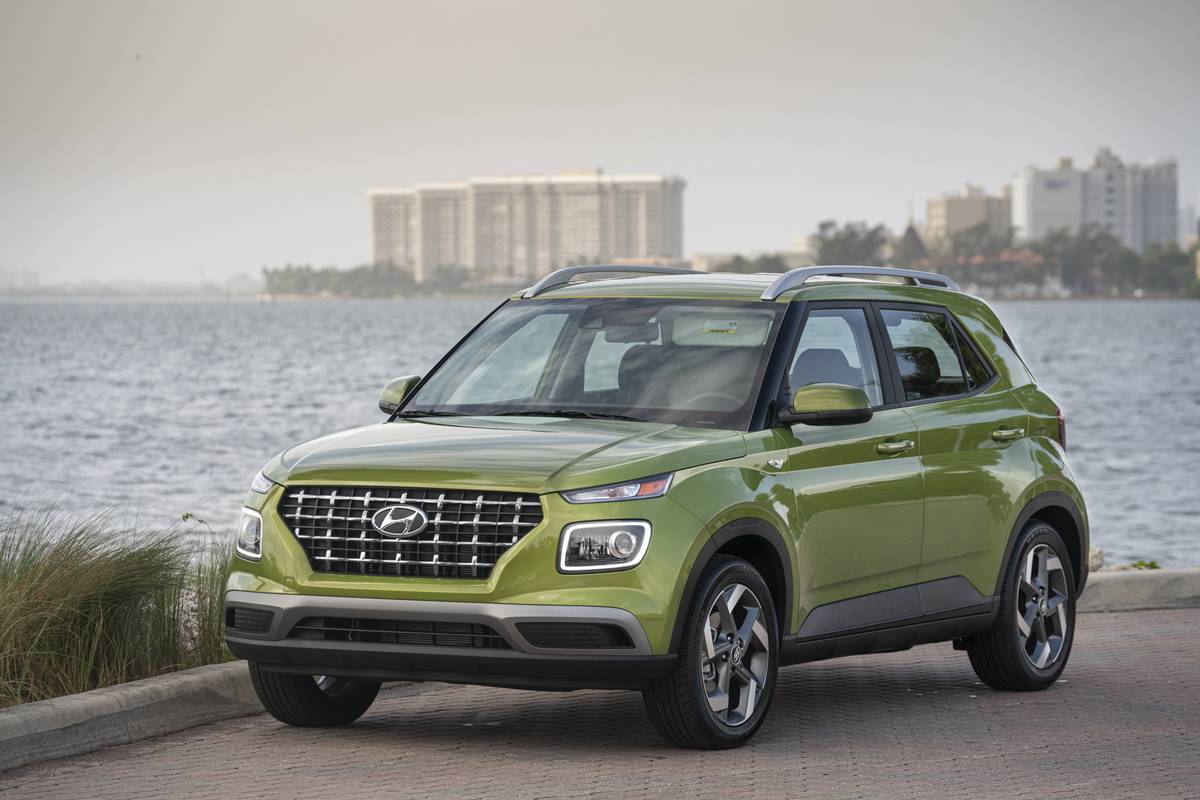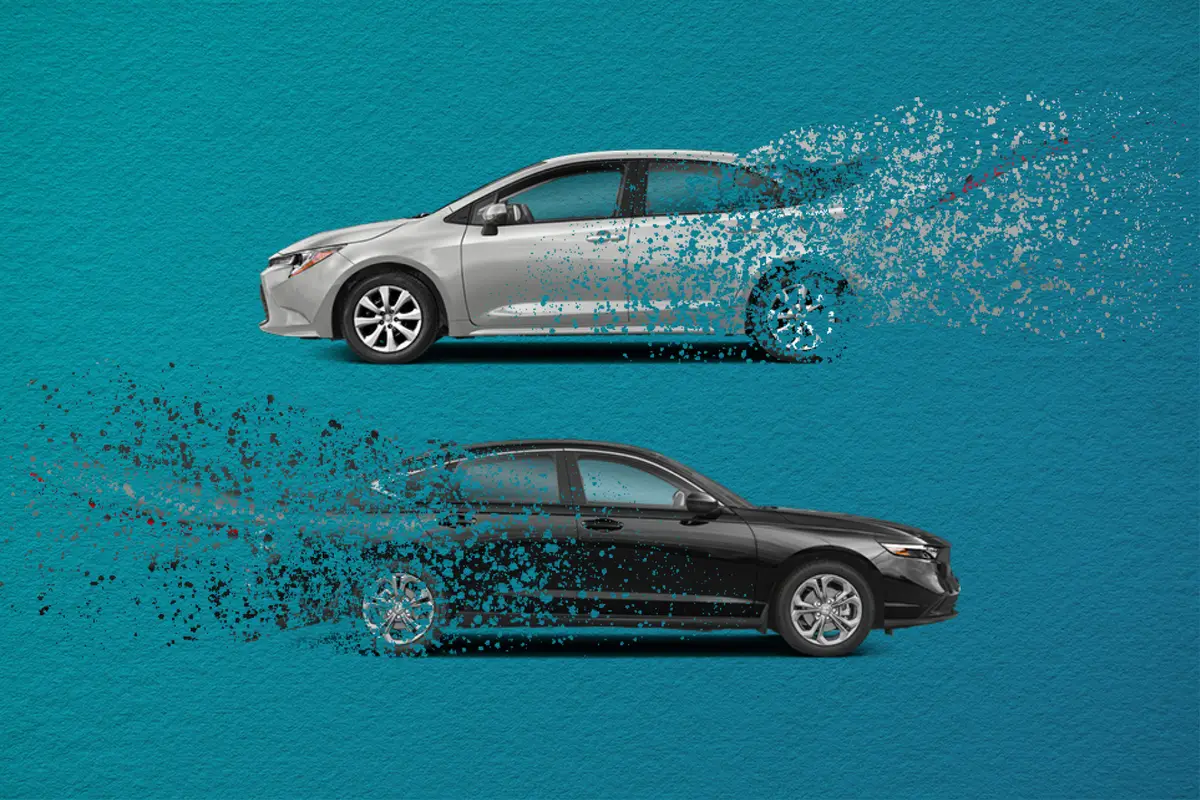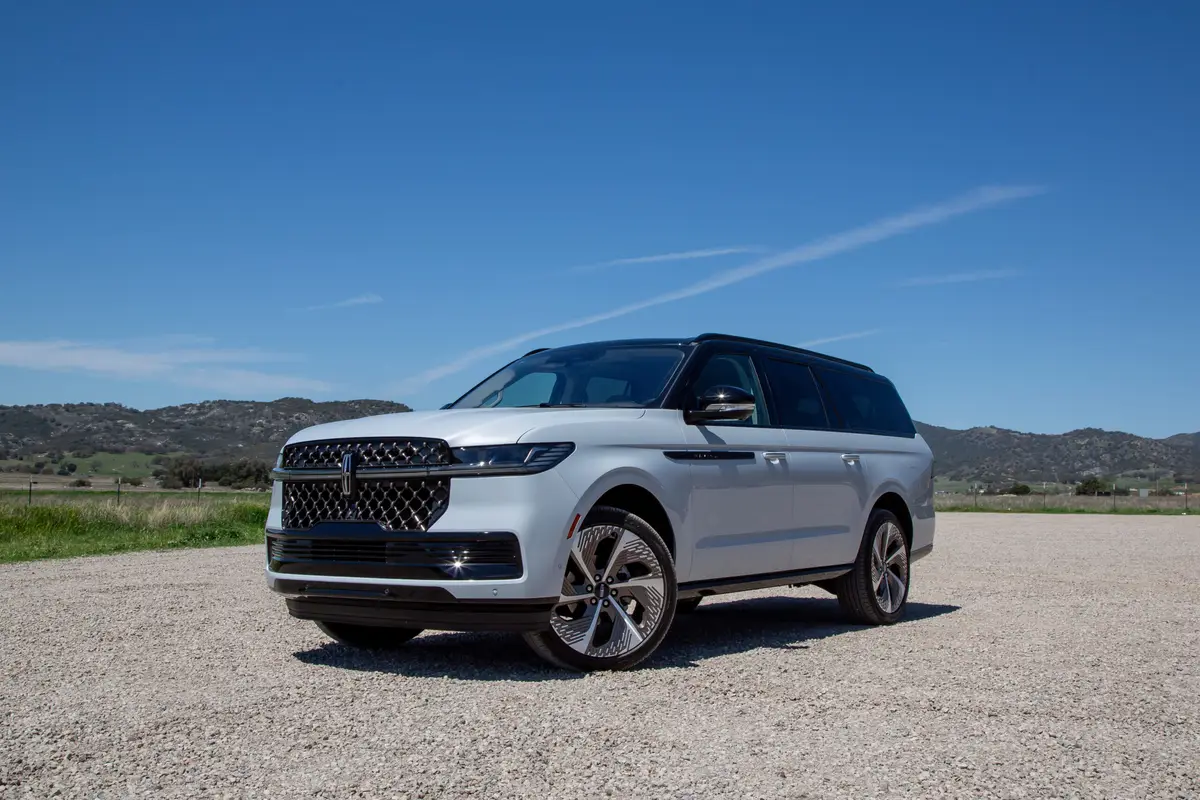2002 MINI Cooper: What's New
Vehicle Overview
Fans of the British-built Mini haven’t seen one officially imported into the United States since 1967. In March 2002, a brand-new Mini arrived in America, capitalizing on the Mini’s heritage but creating a new brand. The modern-day rendition of the legendary Lilliputian motorcar came into being after BMW bought the company that had produced the original. BMW announced Mini pricing at Detroits North American International Auto Show in January 2002: $16,850 for the basic Cooper and $19,850 for the more powerful Cooper S (both prices include the destination charge).
Bigger than its 1960s predecessor, the 21st-century Mini debuted at the Paris Motor Show in fall 2000. A close-to-production version turned up in January 2001 at Detroits auto show. Production began on April 26, 2001, at an all-new plant in Oxford, England, but initial cars were earmarked strictly for Britain, where the Mini went on sale on July 7. Other European countries got Minis starting in September 2001. BMW expects to produce 100,000 units per year, and 20,000 of those will be sent to the United States.
BMW is noted for rear-wheel-drive automobiles, but the Mini has front-wheel drive. It will be available with a continuously variable transmission (CVT). Although a number of components are shared with other BMW vehicles, nothing has been carried over from the old Mini. The Mini actually remained in production until October 2000 for sale outside the United States. Initially, only about 70 BMW dealers in the United States were permitted to sell Minis after they establish a brand-specific sales environment.
Back in the 1960s, Minis turned into automotive icons similar to the Volkswagen Beetle. Minis are driven not only by economy-minded consumers but also by celebrities and even British royalty. The early Mini had a gift for irreverence and fun and cheekiness, says Michael McHale, communications manager for Mini. BMW wouldnt mind seeing similar interest develop in the modern Mini, comparable to the early outpouring of enthusiasm for the Volkswagen New Beetle. A smaller BMW model is also in the works, but it has no relation to the Mini.
Exterior
Designers selected the 1967 Mini Cooper as their starting point. Despite increased dimensions and a more contemporary appearance overall, the new Mini has a squarish shape that’s similar to the original. All four wheels are positioned far out at the corners a theme that also harks back to the first Mini. Short overhangs yield a wheelbase that’s only 4 feet shorter than the entire length of the vehicle.
The Mini rides a 94-inch wheelbase and measures 143 inches long overall. Standard tires for the base model measure 15 inches, the Cooper S comes with 16-inch run-flat tires, and 17-inchers are optional quite a contrast to the 10-inch tires on the original Mini. A choice of 14 exterior colors is expected, with a signature contrasting-color roof. The Cooper S will come in eight body colors. A sunroof is optional. BMW will offer Sport Packages for both models, priced at $1,250 the same price charged for the optional continuously variable transmission.
Interior
The Mini seats four occupants in a configuration similar to that of old Minis, which provides more interior space than the exterior dimensions suggest. A center-mounted speedometer also is reminiscent of the one used on the original Mini. The supercharged Cooper S gets a different, more sporty dashboard look. Options will include a navigation system, xenon high-intensity-discharge headlights and heated seats. Cargo space is 5.3 cubic feet and jumps to 23.6 cubic feet with the rear seat folded down.
Under the Hood
Teamed with either a five-speed-manual gearbox or a Steptronic continuously variable transmission (CVT), the Mini’s 1.6-liter four-cylinder engine will produce an estimated 115 horsepower (that’s the output of the European prototype version). The engine’s torque rating is 190 pounds-feet, which is claimed to accelerate the Mini from zero to 60 mph in a little more than 9 seconds.
A supercharged Mini Cooper S that uses a six-speed-manual transmission also went on sale in March 2002. The Cooper S engine is rated at 163 horsepower and 155 pounds-feet of torque, for a 0-to-60-mph acceleration time of 6.9 seconds.
Safety
Minis contain six airbags, including BMW’s Head Protection System. Stability control is standard, and the Mini uses all-disc brakes.
Driving Impressions
Fun takes center stage with the new Mini. Tight, quick maneuverability is its No. 1 attribute. This little hatchback clings to the pavement as if it was magnetized. Sure, it can start to leap upward in hard turns at high speeds, but theres no sensation of losing straight-on momentum or relinquishing the tires grip on the road. Only a slight turn of the steering wheel just 2.5 turns lock-to-lock produces substantial directional change, which is a big reason for the Minis intense delight quotient.
Ride quality is another story. All cars are compromises between ride and handling. When making their decision, BMW developers clearly leaned toward sportiness. On uneven pavement, the Mini can get pretty bouncy. While delivering smile-inducing experiences otherwise, the ride comes closer to that of a Mazda MX-5 Miata than, say, a Volkswagen New Beetle. The 15-inch tires yield a little smoother ride than the run-flat 16-inchers.
Enthusiasts are likely to adore the Minis cheery personality and tenacious talents by applauding its nimbleness and agility during every outing. Potential buyers who expect more docile, gentle motoring would be wise to try the Mini on a variety of road surfaces to make sure its comfort level is sufficient for longer journeys.
Defying its 115-hp capacity, the engine delivers plenty of zest, but response in middle gears at low speeds occasionally falters. Only the most ardent enthusiasts really need to consider the higher-powered Cooper S. The five-speed transmission and clutch make a great team, with a tall lever helping the driver zip through the gears without a moments hesitation. A Mini equipped with the new CVT was not yet available for testing.
Despite very short bottoms, the sport seats are comfortable and supportive. The regular seats are more basic but no less comfortable, but they may not suit every driver. Although the backseat looks uninviting, its actually quite comfortable with abundant headroom; it offers less space for legs if the front seats are positioned rearward. Seat adjustors arent the easiest to operate, and some controls are idiosyncratic but thats part of the Minis unique personality.
The huge speedometer in the middle is easy to read at a glance, and placing the tachometer atop the steering column seems appropriate in this car. Mirrors are on the small side, and the front seat has no grab handles.
With the questions of ride comfort aside, anyone who savors a sensational driving experience at a low price should start looking hard for a dealer that is willing to sell one of these mighty little machines. Despite the cars small size, buyers are guaranteed to get a fully packed driving experience.
| Reported by Jim Flammang for cars.com From the cars.com 2002 Buying Guide |
Featured stories



2025 Lincoln Navigator Review: Elephantine Elegance

